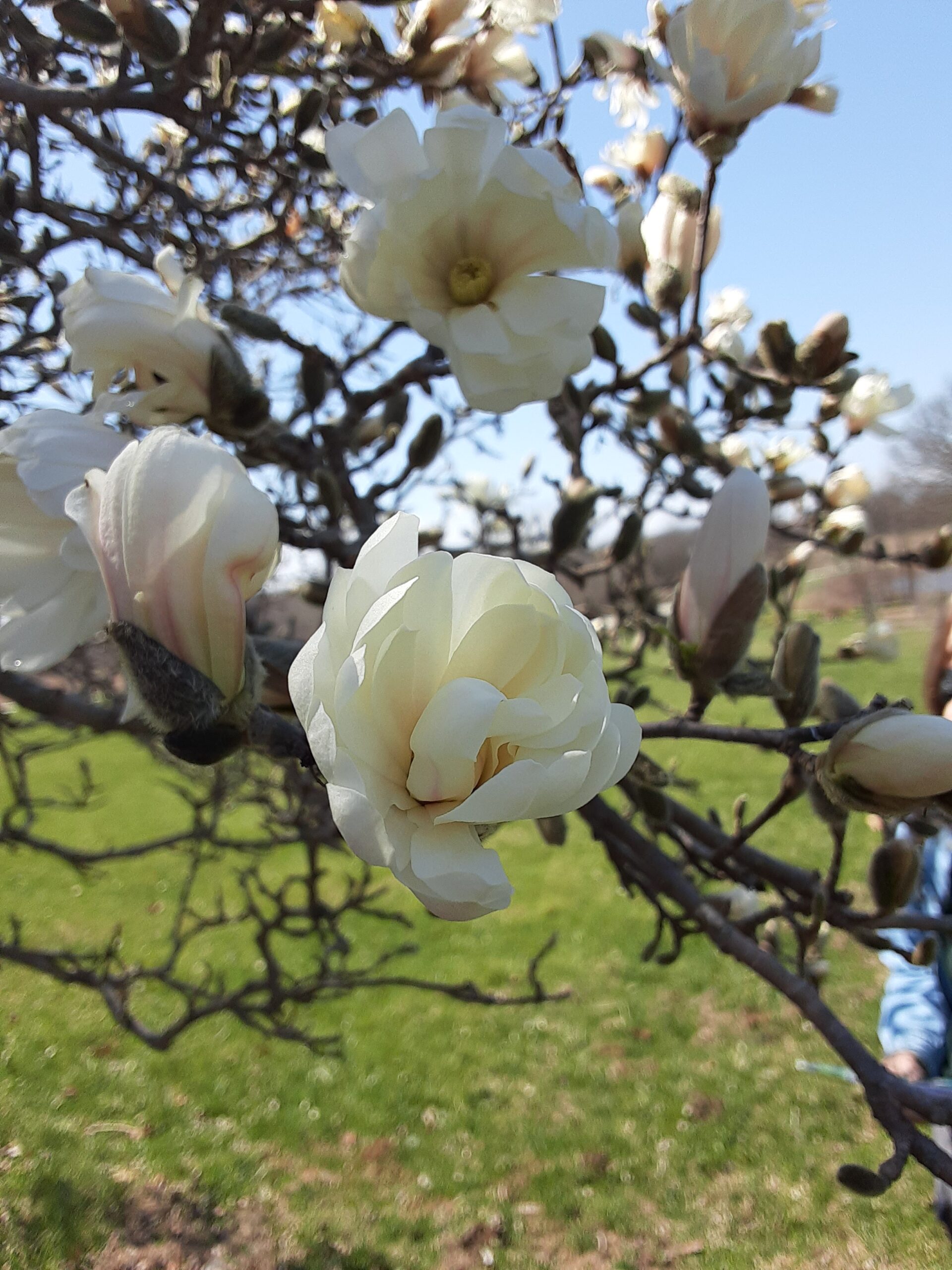In Kansas City, we have one fleeting moment when the forsythia, Japanese and star magnolia, and Bradford pears are all in bloom, and that moment was–yesterday. Or last Friday. I hope you were able to get out to enjoy them.
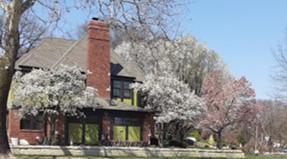
I know Bradford pears are problematic—a Google search turns up articles with titles like The Curse of the Bradford Pear, and Why Bradford Pear are the Worst Tree. Their limbs are prone to splitting; they spread easily and crowd out native trees. I’m not recommending planting them, but aren’t the blooms pretty? Like white ruffles.
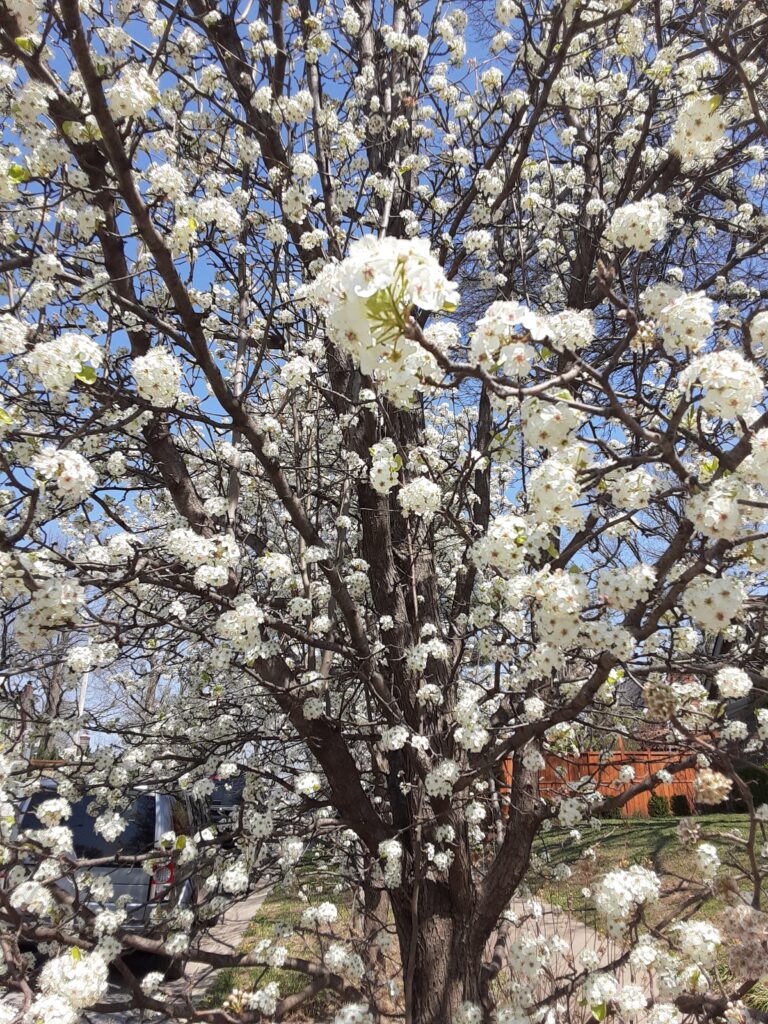
Here’s a link to a Washington Post article that explores the issue in depth: Scientists thought they had created the perfect tree. But it became a nightmare
Here in my pear-free yard, I’ve planted the prairie plants I bought at the Burr Oak Nature Center plant sale last month. I tried to put my newfound knowledge to work. I made a plan.
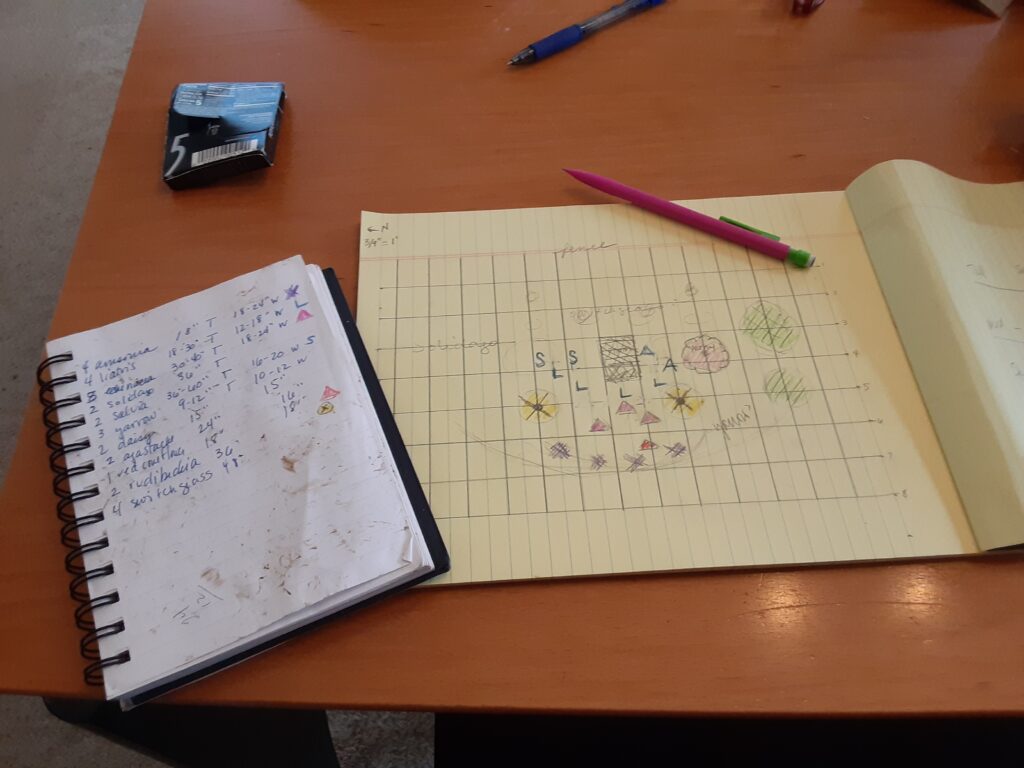
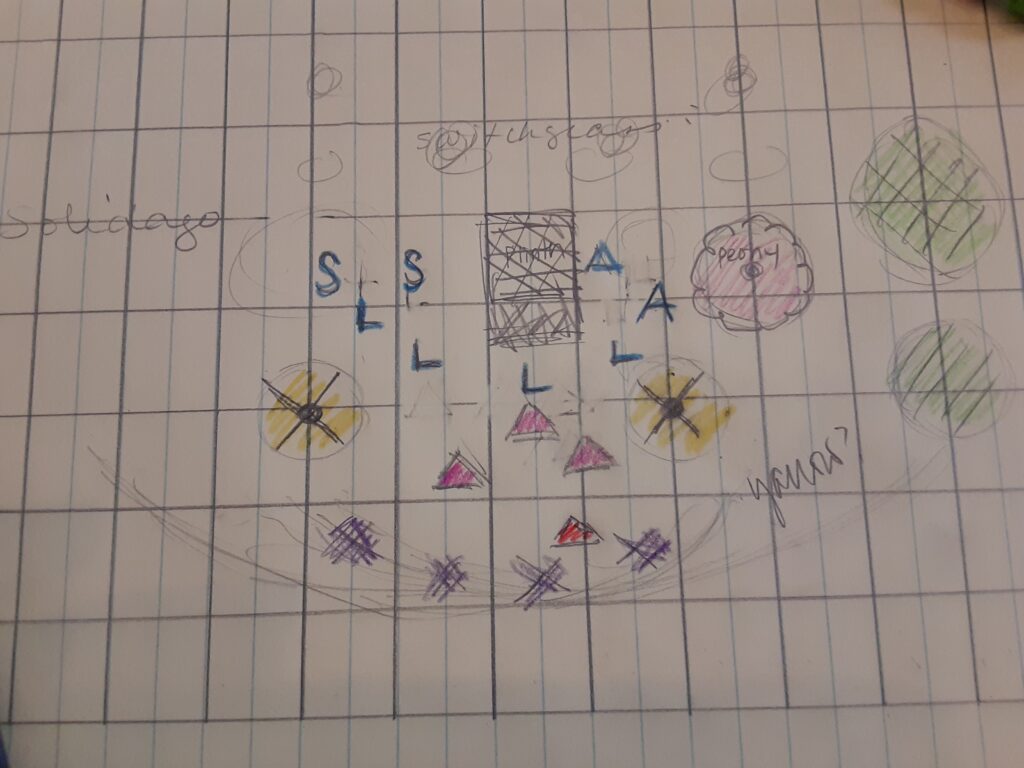
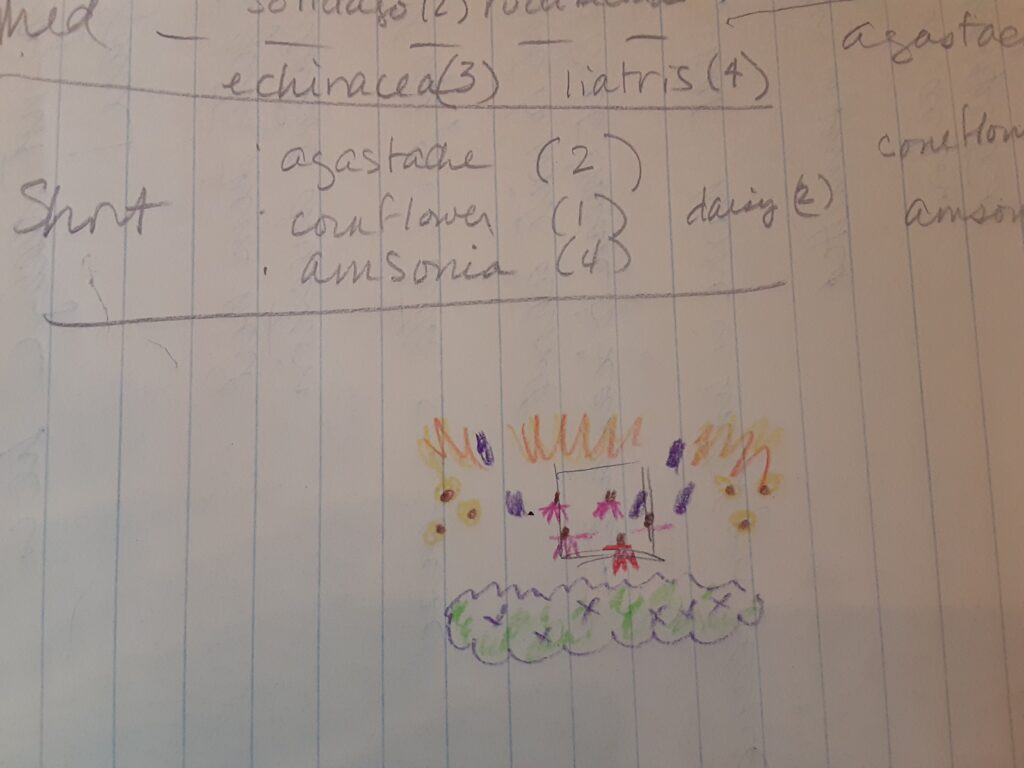
I didn’t map it out on kraft paper this time. Instead, I used paper plates to help me visualize the spacing. I tried to put the plants in clusters so we won’t have any groups of one.
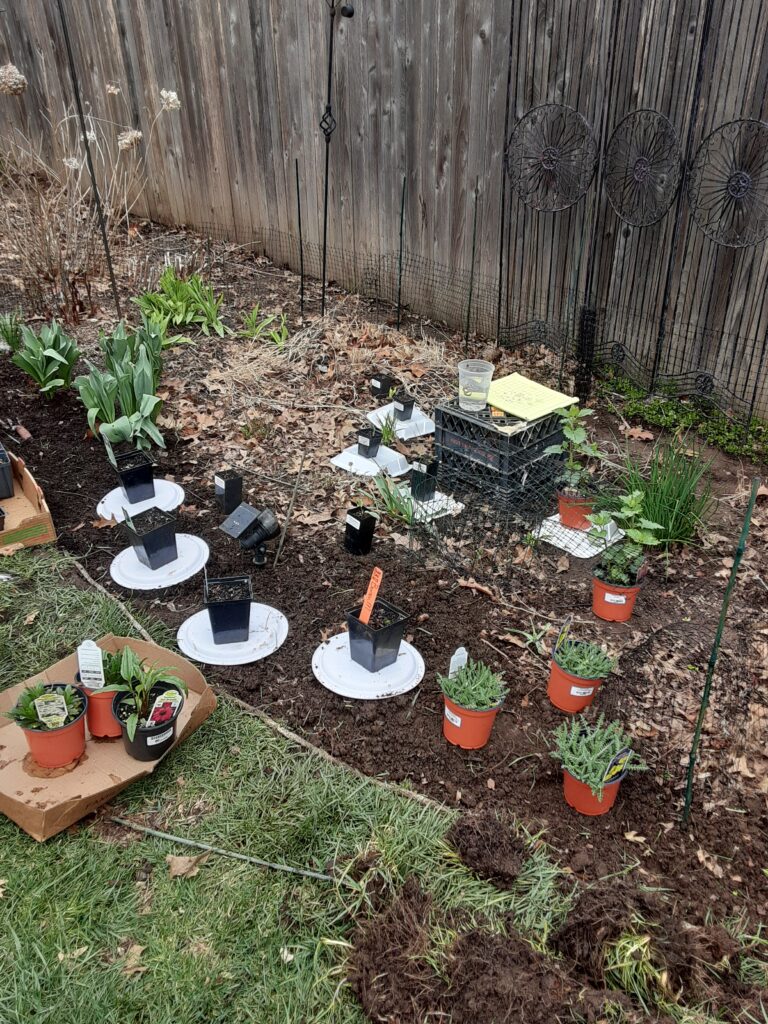
The plants from the plant sale weren’t ready. All advice says to wait until they have 1-2 sets of leaves. Mine had zero leaves. The roots hadn’t developed enough to hold the dirt together. The little cubes disintegrated when I removed the plants from the pots. I popped them in the holes, covered them up, and hoped for the best. I re-spread the leaf litter, too.
Another thing I’ve learned the hard way is to use plant markers. What sleeping plants did I kill while I was spading up those daylilies? I’m looking at you, coreopsis. This time I marked the location of my new seedlings with homemade plant markers I made from cut up paper plates taped to chopsticks.
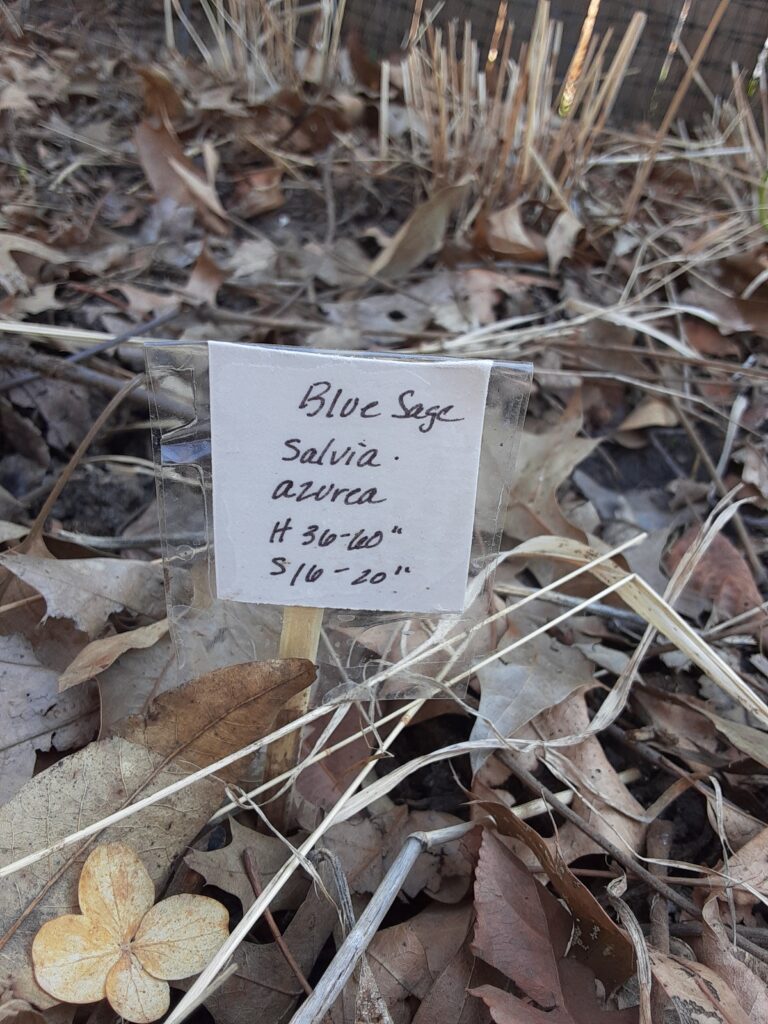
Every time we go to Lulu’s, we get chopsticks. I have a huge collection. The tape is clear packing tape. I hope it will resist rain.
Then I watered. Now I run out four times a day to check on them. So far, so good.
I was careful to place the plants according to plan, but I still have four left over. This placement of seedlings business is a big deal. It’s hard to gauge without experience. The stuff we planted last year was too widely spaced. The plants are lonely sprigs surrounded by bare dirt—not the effect we wanted. On the east side, the milkweed grow to be so enormous, they crowd everything out.
Speaking of milkweed, I did a little guerilla gardening yesterday. We have swamp milkweed—pale-flowering, not very attractive. It spreads aggressively, and some was growing right up against the fence. I dug that up because I want to keep the area clear so we can walk back there. I was happy to reclaim the space, but sad to eliminate the milkweed (because caterpillars). So I carried the clumps down to Brush Creek and planted them among the other reedy things growing on the banks.
I shouldn’t admit to doing that on the internet, but I’m thinking it’s an environmental good deed.
While I was down by the creek, I picked up some other people’s trash.
I didn’t have to go far to collect a huge bagful. I found plastic bags, plastic sheets, a slimy plastic tub of blue cheese crumbles, you name it.
I am upset about litter—as upset as the weeping Indian in the old Keep America Beautiful PSA’s. I mention this in hopes that you will be, too.
If you know of any group organizing a cleanup soon, please let me know because I want to help.
To close on a happier note, this area beside our driveway is the first we planted by adapting one of Roy Diblik’s Know Maintenance plans. It looked like a dirt patch all winter, trampled by dogs, even run over by a Bobcat, but I’ve fenced it off and love watching it come back to life. In pictures it doesn’t look too special, but I have geranium, a little carex, aster, and my favorite, Brunnera ‘Jack Frost.’ I love the tiny blue flowers and white-glazed, heart-shaped leaves.
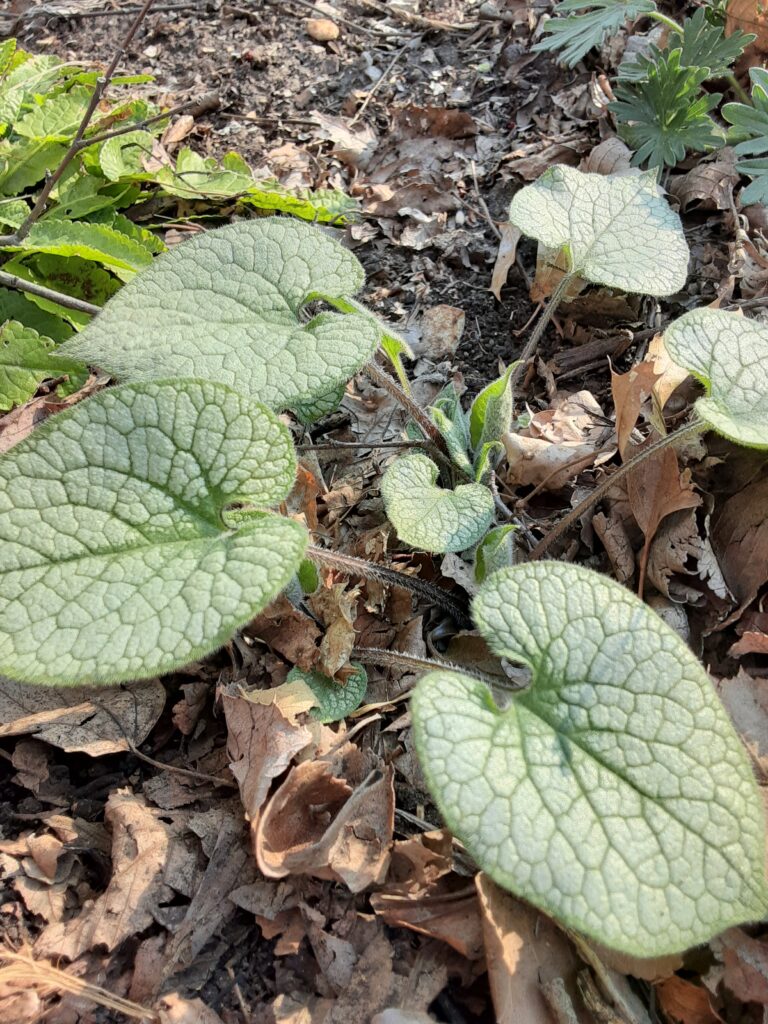
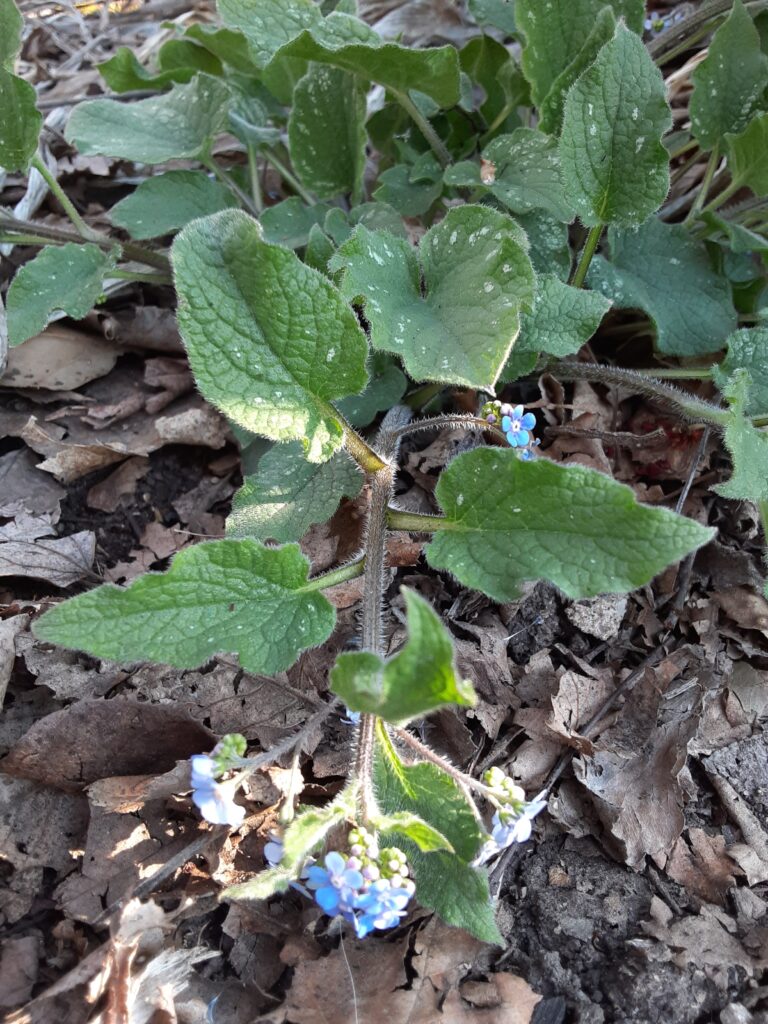
These little green pompoms are Stachys officinalis ‘Hummelo. They’re not native, but they’re terrific. They’ll have purple flowers on upright stems in June.
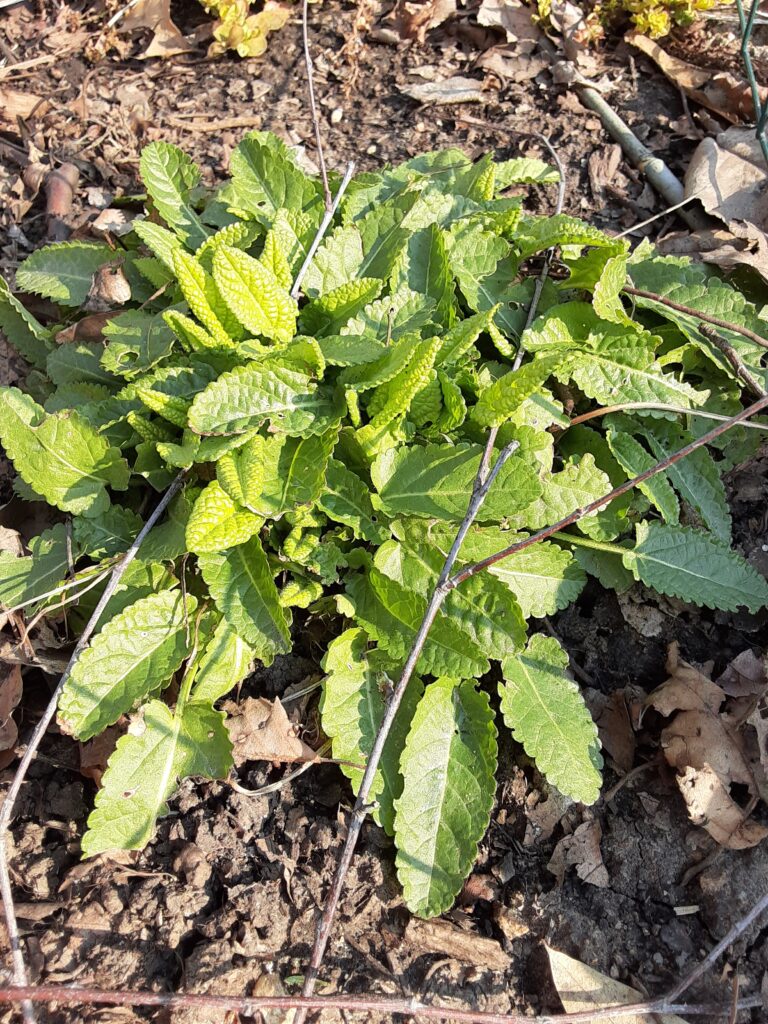
Thanks for reading!
